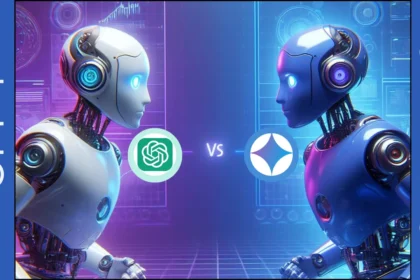The first human of a real Neuralink project – a brain chip implant – has reportedly been done by co-founder Elon Musk.
The experiment deals with an implant that could impact people who have assorted physical difficulties in their ability to control digital devices with their mental powers. The research relies on surgically placing the Neuralink Elon Musk brain chip — called a brain-computer interface implant — in the brain area that comprises the movement intention
Several weeks ago, Musk disclosed that the patient who got the implant, which they creatively named Telepathy, is “recovering well”. He further indicated that “initial results show promising neuron spike detection”. Nonetheless, details about the trials are yet to be revealed.
However, this engineering feat is not just a technical milestone in the history of human-device coordination; it marks a crucial moment in the brain-machine interface development and probably leads to the crucial debate about the place of evolution in terms of the interaction of the advanced technology with the human brain.
What does the Brain-machine interface mean?
Brain-machine interface (BMI), another name for brain-computer interface (BCI), is a device that interprets the brain signals into commands which are formed to control externally the software like that of a computer or hardware, as, a robot that is an arm.
BMI which is popular for responding to functionality of individuals with motoric or sensory impairments allows one to link the thought processes directly to an external device such as a wheelchair without using traditional ways like muscles and nerves.
Brain-Computer Interface (BCI) Companies and Products
The field of BCIs is rapidly growing, with many companies developing innovative technologies. Here’s a table comparing some of the leading BCI companies and their products:
| Company | Product | Application | Technology | Target Audience |
| Neuralink | Telepathy (in development) | Restore lost function, enhance human abilities | Invasive implant | individuals with paralysis, future potential for broader use |
| Synchron | Stentrode | Restore movement and communication | Minimally invasive implant | Individuals with paralysis |
| Neurable | Enten | Enhance focus and control of digital devices | Non-invasive headband (EEG) | Gamers, professionals seeking enhanced focus |
| Emotiv | Epic X | Research and development, education, some entertainment applications | Non-invasive headset (EEG) | Researchers, developers, gamers |
| Blackrock Neurotech | Carport | Research and clinical applications | Invasive implant | Individuals with paralysis, research on ALS, Parkinson’s |
Purpose of the Brain-machine Interface
The aim of stimulating BMI is to identify and quantify the corresponding markers of brain signals about the user’s intentions and to exchange them for the actual device directions in real-time.
This involves four sequential components: acquisition of the signal, extraction of the feature, translation of the same into understandable terms as well as device output, all guided by an operating protocol that is customized to the specific requirements of each user.
Musk’s Neural Link (Neuralink), founded in 2016, was the first brain-machine interfacing (BMI) innovation to emphasize ethical findings and gain regulatory approval. GlobalData mining displays the company’s future innovation direction, as per the Technology Foresight platform, its proprietary framework.
This includes areas like the development of new genetic engineering technologies for biotechnology, augmented reality in neuroscience to identify and predict EEG patterns, and the monitoring of expression and neural activity in the brain. They have received over $540 million from five financing rounds which were contributed by top individuals such as Sam Altman, Katie Mitic, and Elon Musk.
The mission of Neuralnk’s
The stated goal of Neuralink, according to the company, is the ‘construction of a generalized brain interface, which would replace the absence needs of today’s unmet medical patients and would develop human potentials in the future.’ It is the mission that covers two crucial approaches.
In the early term, it would be directed to patients with essential medical conditions. The outlook is broader on a scope of many years further. It is finished with a mission of embellishing humanity’s features.
The developing Neuralink may result in many different scenarios very soon. The second storyline envisages the successful trials resulting in the introduction of the technology in some market segments giving hope but with a limited number of.
The second, more cheerful, vision deals with major acceptance only after successful human attempts usage, meanwhile, offering a chance for a simple revolution in the field of technology. And the third — an approach full of disappointing notes — addresses the end of a journey as a result of communal, technological, legal, and medical reasons.
Powerful Synchron, a start-up from Australia, has made significant progress in BMI innovation with the inceptive technology dubbed COMMAND and engaged in monitoring innovations of neural activity and EEG analysis for neuro-therapies.
The BMI company called Neurable uses advanced data analytics to develop headphones that would capture users’ focus and automatically mute notifications, enable the noise cancellation option, track their focus periods, and craft their personalized playlists.
Neuro-therapies and the collaboration of mankind with AI through the application of BMI will have a considerable and long-term effect according to Sourabh Nyalkalkar, Practice Head of Innovation Products at GlobalData. “Technology firms are at the core of the BMI innovation landscape.
This is manifested by science-backed companies, such as chip makers, wearable producers, and niche start-ups, which typically enjoy backing from corporate ventures. Such as Neuralink, Synchron, Paradromics, and several others. He referred to the fact that strong activity in the start-ups and university sector, alongside a more significant presence
The Neuralink Brain Chip Price
Neuralink has not yet revealed the cost of its brain chip. However, according to Bloomberg, the cost is estimated to be $10, 500 (about £8, 300). The report also states that insurance companies in the US could be charged up to $40,500 (about £31,500).
According to Allied Market Research, the global market for brain-computer interfaces stood at a supposed worth of $1.48 billion in 2020 and is predicted to reach a CAGR of 13.9% from 2021 to 2030, which will take a worth of $5.46 billion by 2030. Factors like innovations in human-machine sensing are one of the reasons for the market’s increase.
Competition between technology companies demands faster collaboration between larger companies and passionate startups across the globe in the next few years.
Future of Neurotechnology
Elon Musk seems to have a visionary idea of telepathy and neuralink which goes on the track of merging humans with machines and thus, it creates a responsible environment on a mental level along with the threat of hacking.
Neurobiologist Rafael Yuste is one of the world’s advocates for mental privacy protection, which is based on the idea of the exceptional character of the brain. Although the Neualink clinical trial that got approval from the FDA marks a turning point, when the product will be brought into the market is just another question that remains.
The initiation of human trials also raises awareness of such products by highlighting the obstacles and uncertainties that are inherent in developing neurotechnology.
Telepathy will for sure allow you to “control your phone or computer how you want, through them – almost any device, just by thinking”, he said.
“Tailing users would be the ones that have lost function of their limbs,” he added.
Referring to the late British scientist who had motor neuron disease, he added: “Think of Hawking communicating faster than a lightning-speed typist or auctioneer. What I hope to do is reach the same speed Hawking must be dreaming of.”
The possibility of returning lost functions not only to human beings can enhance certain human abilities at the expense of human ethical issues which would mean a breach of human innovation boundaries in the field.
Navigating through unknown grounds, the ethical framework of brain-computer interfaces is the key issue in the discourse which among other things like privacy and safety concerns society.
FAQs
1. What Is Elon Musk’s Neuralink Brain Chip?
The Neuralink brain chip is the brain chip that Elon Musk plans to use to create a new technology called Telepathy. Musk has said that Telepathy will enable people to use their phones or computers “just by thinking” and that the chip will also help people overcome neurological disorders.
2. What is the future of Neuralink?
In the long term, one of the most promising applications of BCIs is to improve memory and brain learning. In the future, we may be able to download abilities and information directly into the brain, pushing the limits of human cognitive ability.
3. What is the Neuralink Brain Chip Price?
Neuralink has not yet revealed the cost of its brain chip. However, according to Bloomberg, the cost is estimated to be $10, 500 (about £8, 300). The report also states that insurance companies in the US could be charged up to $40,500 (about £31,500).
4. What is Neuralink's success rate?
Last month, Neuralink, the brain chip startup, successfully performed its first implantation in a human. Elon Musk’s company announced that the first human patient to receive a Neuralink brain chip implant has made a full recovery and is now able to move a mouse around a screen by thinking, Musk said at a Spaces event at X.
5. What is the purpose of Brain Chip?
Brain chips are designed to help people use their phones or computers by allowing them to think about what they would like to do on those devices.












